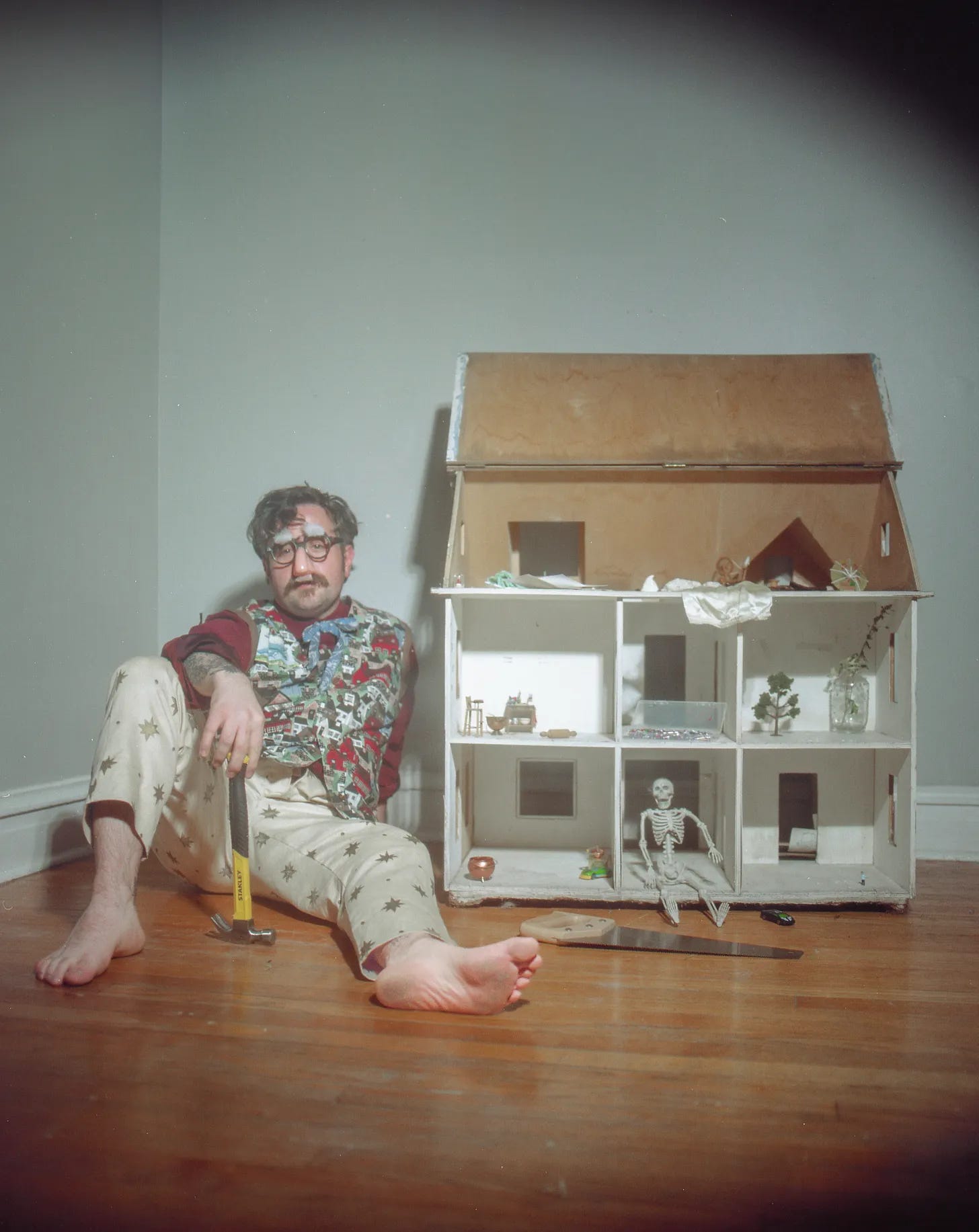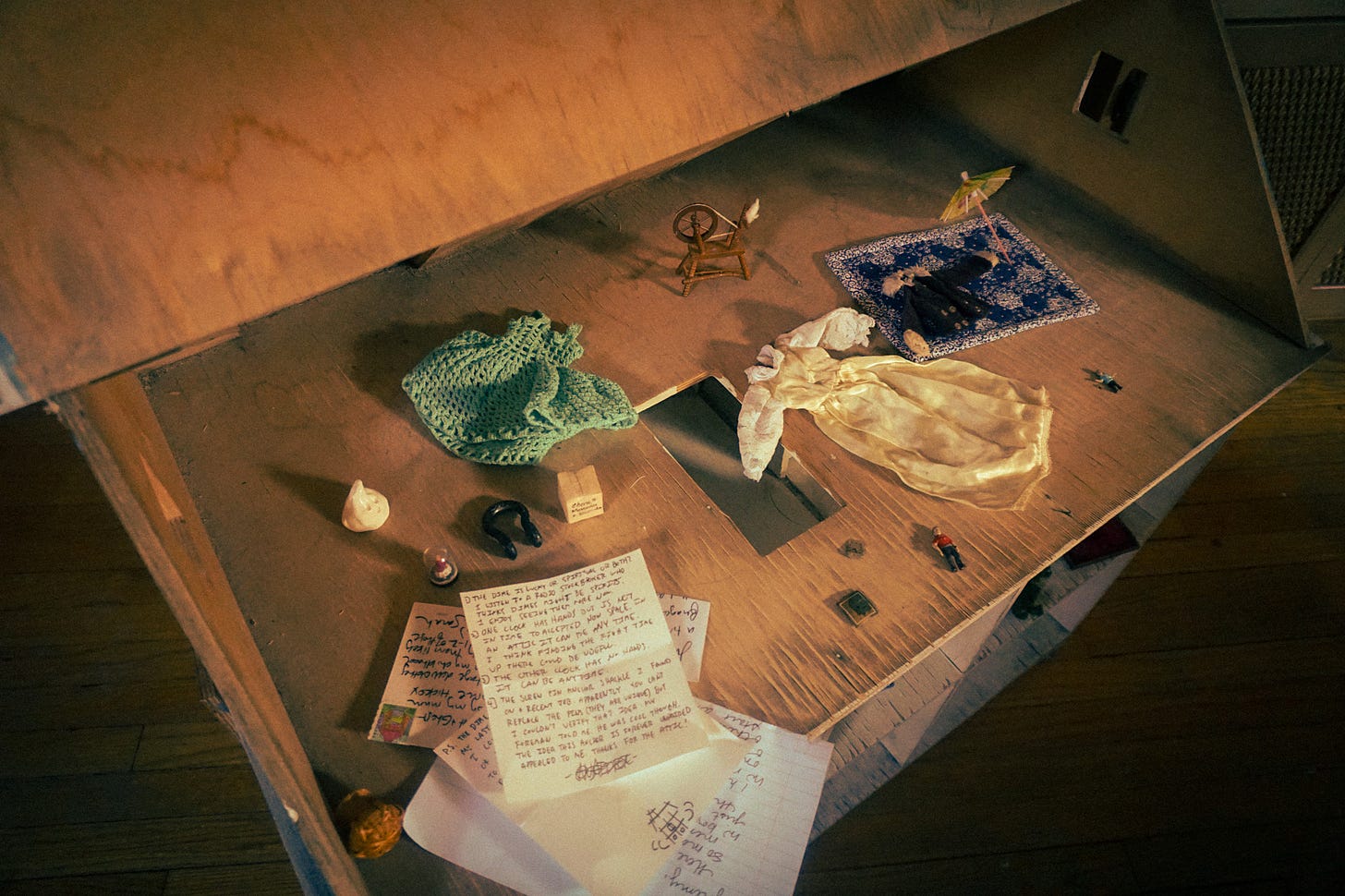The Dollhouse Project: Start Here!
What stories do we tell about homelessness?
In 2024, homelessness in the United States surged by 18%, yet our culture lacks a shared language to meaningfully address this crisis as a human issue. The prevailing narrative blames homelessness on personal failure, ignoring the undeniable impact of wildfires, floods, and the corporate acquisition of housing—forces entirely beyond individual control—that deplete the nation’s housing stock.
The Dollhouse Project is an evolving, collaborative, multimedia storytelling project that seeks to explore the psychological dimensions of homelessness. Beyond statistics, it asks how this experience lives in the body and the mind and considers the broader loss to society when this growing population is neglected. At its heart, the project aims to empower those affected to define their own stories and reimagine the world in miniature—on their terms.
The Dollhouse Project began when I came across this abandoned dollhouse covered in exposed nails and splinters on the beach near my house. Following an impulse to take it home and give it a new life, it slowly became an object to meditate on my own experiences with homelessness—both on a personal level, and in my professional experience working at a homeless shelter.
Before finding this dollhouse, I had not yet named my experience of homelessness for myself. I knew that there were stretches of time I’d spent relying on friend’s couches, and that I often slept in the storage room of the shelter I worked at. I saw my own experience as benign when compared to those that I worked with. Yet, I felt an enduring sense of alienation from my time without a home.
Out of these reflections, I gained the insight that houses have become invisible to people who’ve always had the privilege of having one. Even for myself, if I wasn’t careful, I’d soon forget how much having control over my own environment influenced my ability to achieve self actualization. Living in the corner of my dining room, this dollhouse became a constant reminder of the importance of home to having a sense of self.
I knew that this was something deeply personal, but universally experienced. At the start, I didn’t fully understand what I was doing, but I followed my intuition and began the project by inviting others into a conversation about houses, and asked a simple question to my readership.
Prompt #1: What’s in the Attic?
I asked “What’s in the Attic?” and then received in the mail an array of miniature objects my readers associated with attics.
The dollhouse attic now represented any old attic, but in miniature—quite mundane. Here are some clothes and quilts left for the moths to devour. There is a cardboard box forgotten, a watch with its hands stuck. Over there a sewing machine, and an old spinning wheel, are now obsolete. A Screw Pin Anchor Shackle (with missing pin) found on a construction site was the most puzzling of all.
At first I feared that I’d reached a dead end, and that none of these objects were remarkable. I silently admitted defeat for a time. I continued my other creative projects. I eventually pressed on, drawing and painting these objects meditatively for a while until I arrived at an obvious epiphany— in the collective unconscious, and also in reality, attics are largely made up of the same things. And, while these things might not at first seem significant, they are worthy of our stewardship and contemplation. Material culture connects us to the past, and no matter how uncomfortable that past may be, it is important to hold in collective memory.
Help! I’m stuck in the attic!
It’s only metaphorical, I know. But I have been unsure for some time now how to move forward with the project. I’ve come to love the attic, and all it’s forgotten things. I came to realize the great importance of small things, even though they are often overlooked. There is still so much of this project that remains a mystery to me, but it always circles back to the importance of small, forgotten things.
Leonardo da Vinci once wrote in his notebooks:
"Man has been called a world in miniature, and rightly so. Just as the body of the earth is composed of earth, water, air, and fire, so is man. Bones support the body as rocks support the earth; blood flows through veins as water courses through springs. The earth, like man, breathes—the tides rise and fall as lungs expand and contract. Though the earth lacks sinews, being stable and unmoving, in all other ways they mirror each other."
If each individual is a world in miniature, what are the implications of neglecting them? Of denying them a home? If provided the tools, knowledge, and resources, what kind of world would these people help us build? What is lost along with the people and things we discard?
The project itself has come to parallel my own life in mysterious ways. I am trying to leave the attic. The natural progression seems to be to build myself some stairs and descend into the hall.
This period seems to involve looking outside of myself—for others interested in sharing their stories, resources and ideas. This project, so far, has been about building a bridge from my experience to yours.
What can we build together?







Love this. Great idea. Also it fits well with my substack, actually. My mother used my dollhouse for her art. Now I’m using her dollhouse paintings for my writing.
I would love to make wallpaper